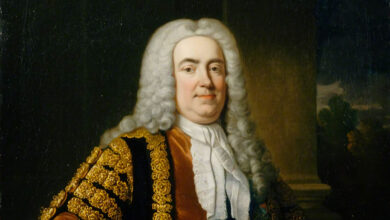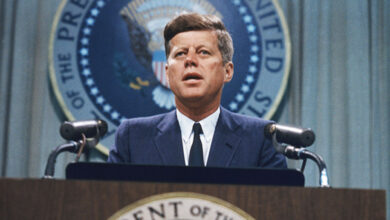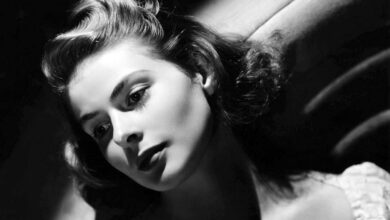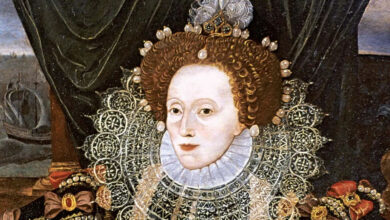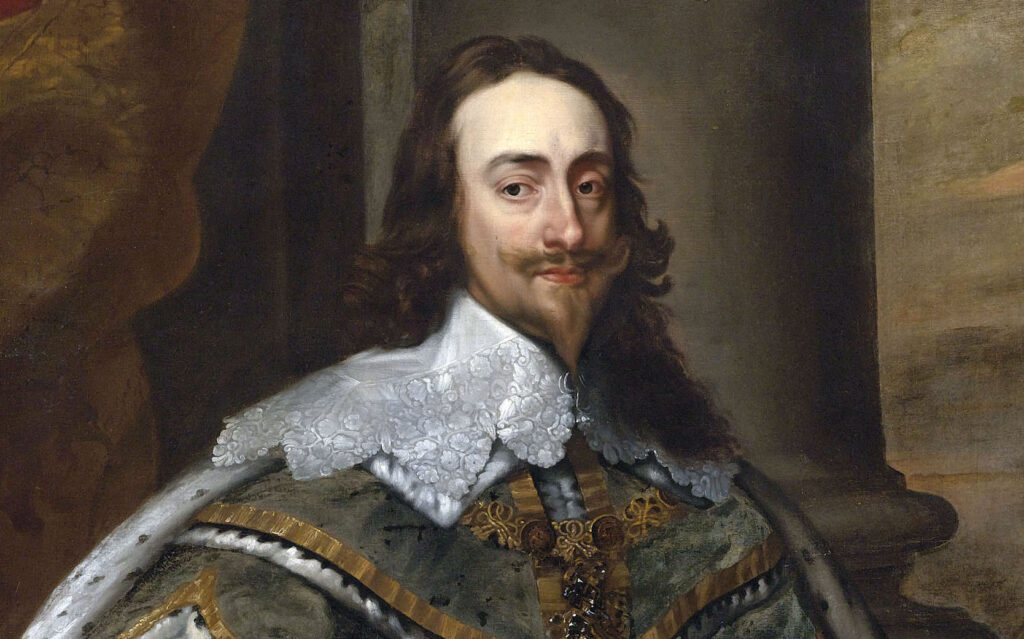
Podcast: Play in new window | Download
Subscribe: Spotify | Amazon Music | Youtube Music | RSS
“Never make a defence or apology before you be accused.” – King Charles I
On 19 November 1600, Anne of Denmark, the wife of King James VI of Scotland gave birth to their second son at Dunfermline Palace in Fife. He was named Charles and was baptised at Holyrood Palace in Edinburgh on 23 December the same year.
Charles was a sickly child and so, when Queen Elizabeth of England died childless in 1603 he was unable to travel with his family to watch his father be crowned King of England and stayed behind in Scotland with his guardian Lord Fyvie. However, a few months later it was determined that Charles had gained enough strength in his legs, which it is thought may have been affected by rickets, to make the journey. Upon his arrival, he was placed under the care of Lady Carey who arranged for him to wear special boots made from Spanish leather and brass which were designed to help strengthen his ankles.
Charles’ ability to walk wasn’t the only thing that was slow to develop as he also was slow to begin talking and even when he did, he developed a stammer, which was something that remained with him for the rest of his life.
As a young boy, Charles was educated in the usual subjects including languages, mathematics, and religion. In January 1605 he was made Duke of York and in 1611 he was made a Knight of the Garter and as he grew, he gained strength and eventually overcame the physical impediments that had affected him as a child although he was still not as tall or strong as his older brother Henry. Unfortunately, though Henry’s physical prowess was not enough to help him overcome what is thought to have been typhoid and he died in 1612 at the age of eighteen, elevating Charles to first in line to the English and Scottish thrones at the age of 12. He immediately gained several more titles and in November 1616 he was made Prince of Wales and Earl of Chester.
During the latter half of the decade and into the 1620s, during what was a period of unrest in Europe that eventually became the Thirty Years War, King James I sought to find peace through diplomacy and the marriage of his son Charles to the Habsburg Princess Maria Anna of Spain who was the niece of Ferdinand, the Holy Roman Emperor. However, the English parliament was opposed to such a union, demanding instead that Charles seek a protestant marriage. A last-ditch attempt at the union was made when Charles travelled in secret to Spain to conduct negotiations personally in February 1623, but this ultimately proved fruitless. When Charles returned without a bride parliament seized the opportunity to demand war with Spain and the King reluctantly agreed. He summoned parliament in 1624 to ask for war funds which were forthcoming but proved less than needed. The resulting army under the command of Ernst von Mansfeld never made it further than the Dutch coast.
During this time, the King’s health was deteriorating and Charles, along with his supporters including the Duke of Buckingham and Archbishop William Laud had effectively taken over the running of the country. In March 1625 it became official when King James I died.
On 1 May the same year, Charles married by proxy the 15-year-old Catholic French princess Henrietta Maria whom he had seen in Paris whilst en route to Spain two years previously. They met in person for the first time in Canterbury on 13 June 1625 whereupon the marriage was consummated, thus removing any chance of objection to the union by parliament, the opening of which had been delayed by the King for this very reason. Charles was crowned King on 2 February 1626 at Westminster Abbey.
King Charles I believed that all kings inherited the right to govern and was determined to do so according to his own thoughts and ideas, ideas which proved to be unpopular and were perceived as the actions of a tyrant. His dissenters thought that he was too Catholic and his impotent attempts at supporting the protestants during the 30 Years War along with the levying of taxes that were not supported by parliament helped to turn the English and Scottish parliaments against him. In 1629 Charles saw no further use for parliament and dismissed it, meaning that he would be ruling alone and without parliament’s financial backing.
In 1637 the King ordered the use of a new prayer book in Scotland which was almost identical to the English Book of Common Prayer and although it had been written by Scottish bishops, it was resisted by many Scots who saw it as a way for Anglicanism to be brought to Scotland. When the book was supposed to be used for the first time on Sunday 23 July, riots broke out and when the General Assembly of the Church of Scotland met in November 1638 it outright condemned the book.
Charles saw this as an affront to his authority and so began the first Bishop’s War in 1639 which ended with the defeat of the King and the signing of the Treaty of Berwick.
As opposition to the King escalated, he was forced to recall parliament but by now, not only was Charles facing opposition in Scotland and England there was also military insurrection in Ireland and by 1642 England was in the middle of a civil war.
The civil war lasted for four years but in 1646 Charles was finally defeated by a coalition of Scottish forces and the New Model Army under the command of Oliver Cromwell.
A short-lived second civil war broke out in 1647 when the King escaped to the Isle of Wight from where he directed discontented Scots to invade England. Cromwell put down the invasion within a year and King Charles I was indicted for treason and a trial began on 20 January 1649 in Westminster Hall.
However, the King insisted that the trial was illegal as he believed that no court had jurisdiction over a reigning monarch and so he refused to enter a plea. Following a third day of the King refusing to accept the authority of the court he was removed, and the rest of the trial continued in his absence. On 26 January after 30 witnesses against him had been heard, he was found guilty of treason and sentenced to death.
On 30 January 1649 King Charles I walked under guard from St. James’ Palace wearing two shirts as he didn’t want to shiver from the cold and have the crowd think he was afraid. He climbed the scaffold that had been erected in front of the Banqueting House at the Palace of Whitehall and gave a final speech.
At about 2 pm the King put his head on the block and with a single clean stroke he was beheaded. King Charles I was buried on 9 February 1649 alongside Henry VIII in St George’s Chapel at Windsor Castle.
Podcast: Play in new window | Download
Subscribe: Spotify | Amazon Music | Youtube Music | RSS

